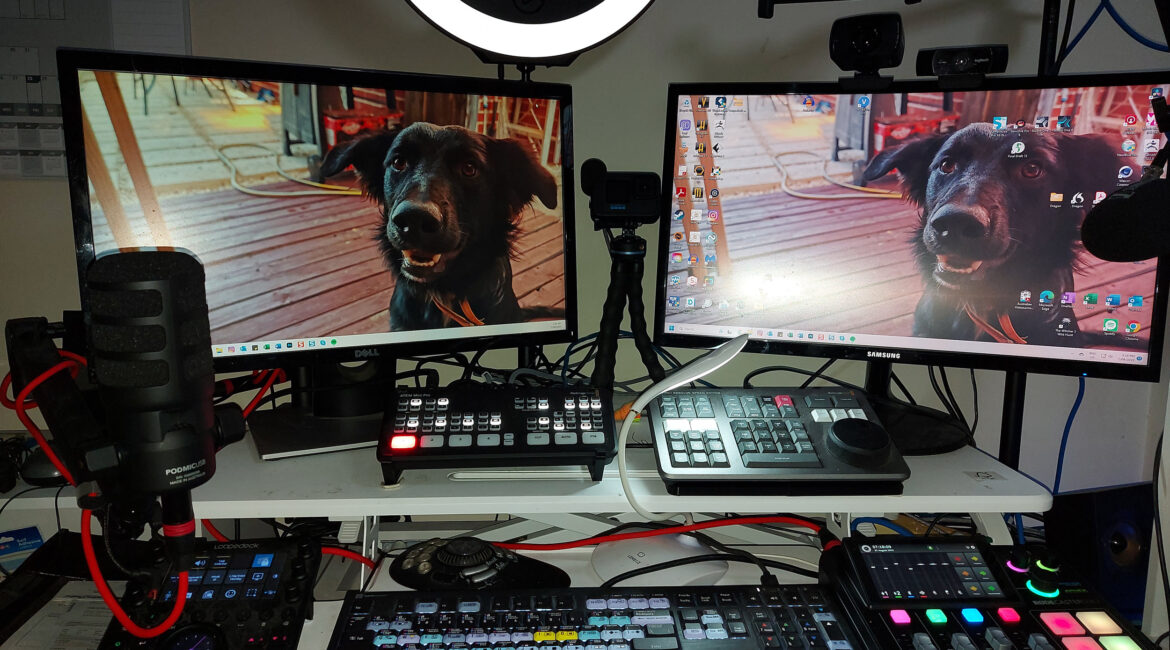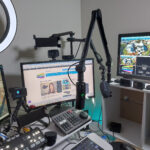RØDE, like its counterpart in the broadcast camera and switching gear etc field, Blackmagic Design, is an Australian phenomenon; a small business that has grown into a global audio superstar but remains truly Australian based.
It’s been clever too and broadened its scope beyond microphones into the podcasting market where traditional competitors have chosen for reasons best known to them, not to follow.
One of the products that has been a rip-roaring success are the RØDECaster Pro and Pro II, integrated podcast production consoles. Today I received their bigger sibling, the RØDECaster Duo.
And what a device it is.
Let me give you some background first as why I think this.
Back in another life, I was full time as a “soundie” for a major band called Nirvana. No, not the “other one”, this band was early 80s and Perth based in Western Australia – and VERY successful, working 7 nights a week and often 2 gigs a night. This was back in the good ol’ days of Pub Rock, and Nirvana’s brand of music was well accepted. Think Doobie Brothers, Steely Dan, Chicago, the Average White Band and the like.
My job revolved around a Stramp 40 channel stereo mixer as all five band members had vocal mics as well as all instruments miked, including a full drum kit setup. So I learnt my craft, as it was, in large pub venues and nightclubs in a live environment, also playing with add on gizmos such as echo machines, smoke generators, advanced lighting and so on. Nirvana’s aim was to put on a show, not just play pub dance music and if I say so, we did this very well, as did other Perth bands at the time such as the Statesmen and the Troupadors.
And I loved every minute of it, especially the creativity it could afford.
Later, I graduated to including video, creating video training for Microsoft Office and Windows amongst many others, but instead of ‘dry’ “now we’ll click this” type tutorials, we wrote stories weaving the training into various scenarios such as “A Day in the Life of a Successful F M Rock Radio Station” where Excel and Access were front and centre.
In the past few years, I have waxed lyrical about the Blackmagic Design ATEM Mini Pro, as this has done in a small panel what used to require tens of thousands of dollars’ worth of kit.
The RØDECaster Duo, in my humble opinion has done the same for audio,
At this point, I have done a cursory setup, configuring the system for a couple of mics (a RØDE Podmic USB and Sennheiser MKE 600 both connected via XLR cables – the RØDECaster Duo will NOT work with USB-C mics), a single pair of Sennheiser HD 25 monitoring headphones, and my Samsung A71 phone via Bluetooth.
Getting to this point was mostly a doddle; I needed to get some XLR cables as everything I used previously was 3.5mm or USB-C based, and the Bluetooth on the A71 stubbornly refused to connect until I had rebooted both it and the RØDECaster Duo.
(Tip: JB Hi-Fi has 3 packs of 1.5m XLR cables for $24.95)
Running the setup wizard ran me through the basics including ascertaining the correct gain levels. Once done, and the aforementioned Bluetooth shenanigans, I accepted the rest of the defaults and was, apparently good to go.
The RØDECaster Duo has four channels with sliders, and the first three I allocated to Mic 1 (RØDE PodMic), Mic 2 (Sennheiser MKE600) and Bluetooth (smartphone).
The RØDECaster Duo also has 6 “pads”, that by default are allocated to a bank of built in sound effects. In my case, this was Music Bed, Trombone, Applause, Airhorn, Crickets and Record Scratch, and these were on Slider 4.
This gave the net effect that within literally minutes, I had a fully working audio deck with provision for vocal (or external instrument like guitar or piano etc if I wished), external music source (Spotify on the smartphone) and a bank of effects.
All I need was to either connect an external hard disk such as the Verbatim Verbatim VX500 SSD with 120GB storage using the USB-C port designed for this purpose, plugin a microSD card into the slot on the RØDECaster Duo, or of course connect via the USB-C to a PC.
Which if I did, potentially offered huge other opportunities, yet to be explored and confirmed. For example, in theory at least, the audio from the RØDECaster Duo could be routed from the USB-C to a PC and then back out of the PC’s sound card and into the Blackmagic Design ATEM Mini Pro thus giving a fill audio mixing solution to streaming video and vlogging.
For now though, I intend to play with what I have, as I have only just scratched the service of what RØDE’s engineers have put together.
Trust me, at AUD$699, the RØDECaster Duo is a bargain.
I’ll be back to you…






